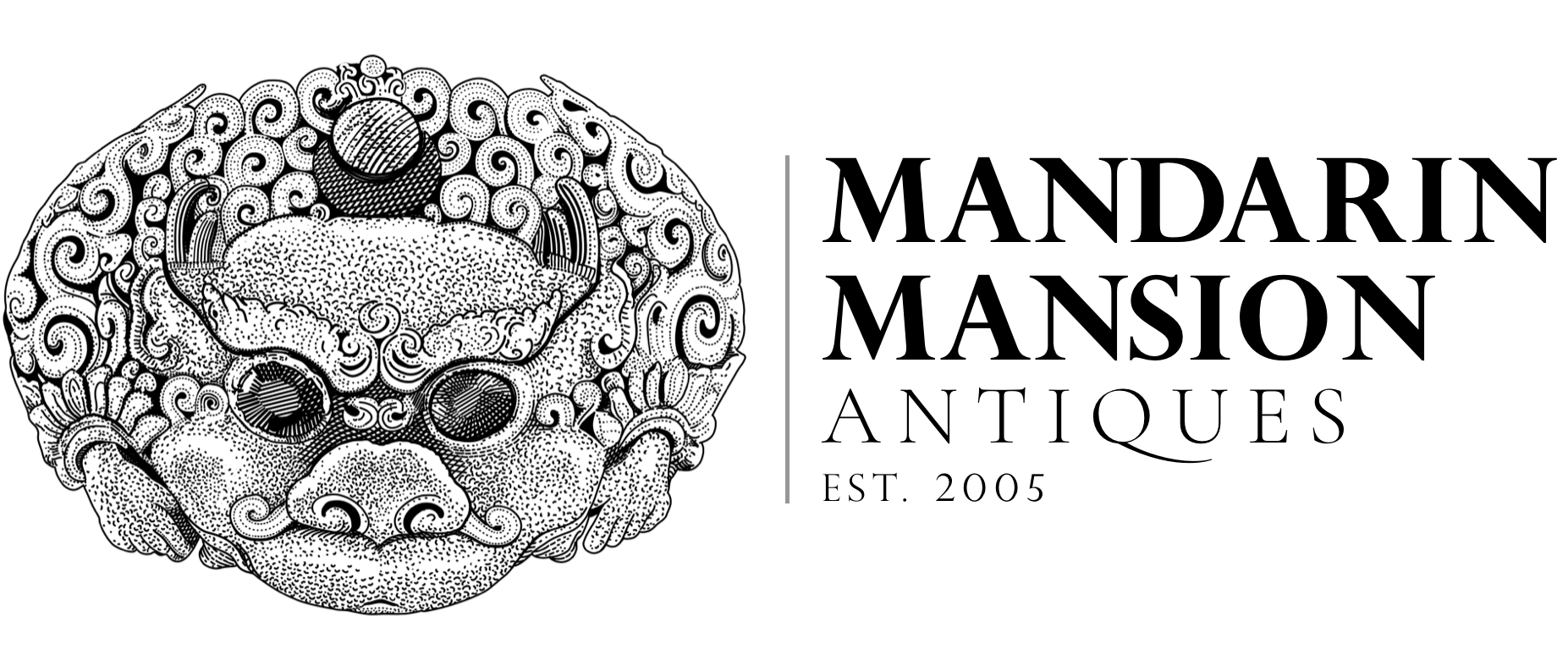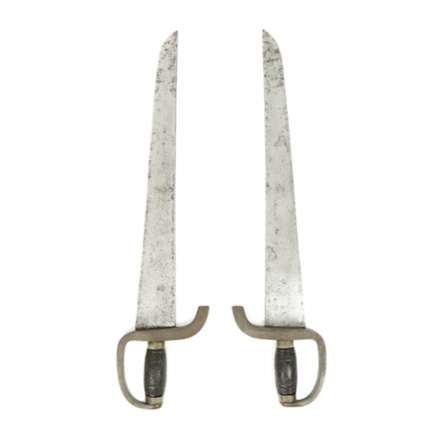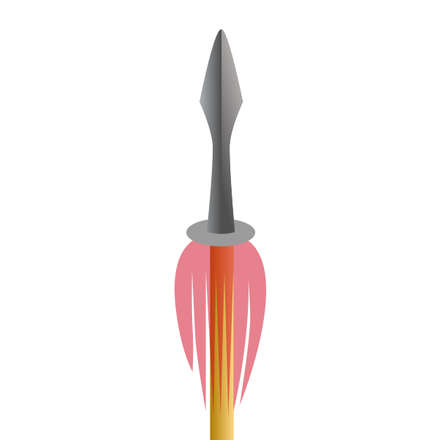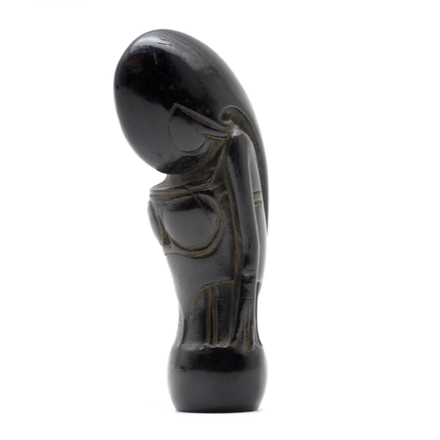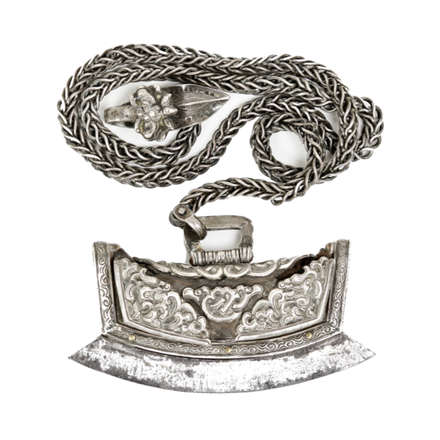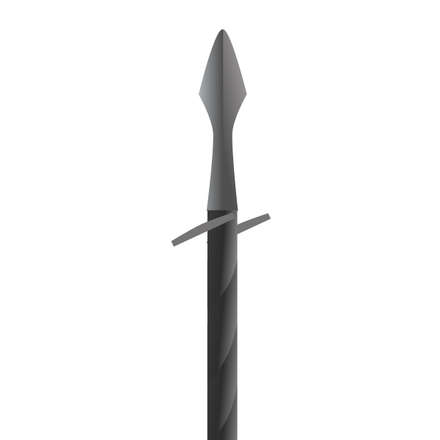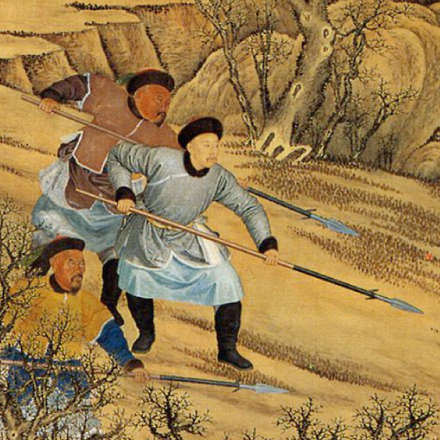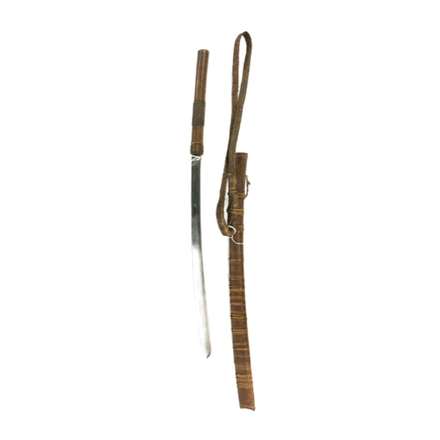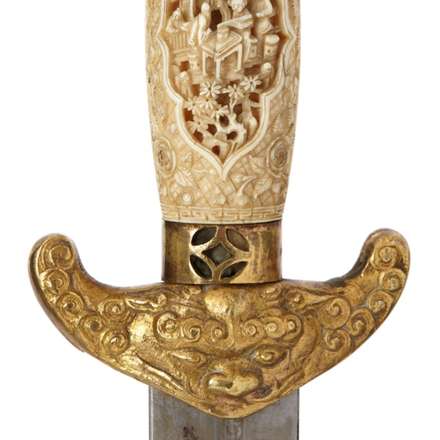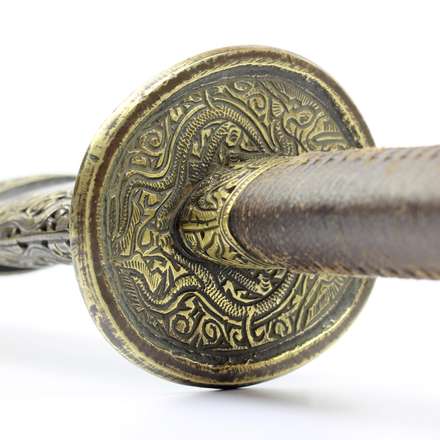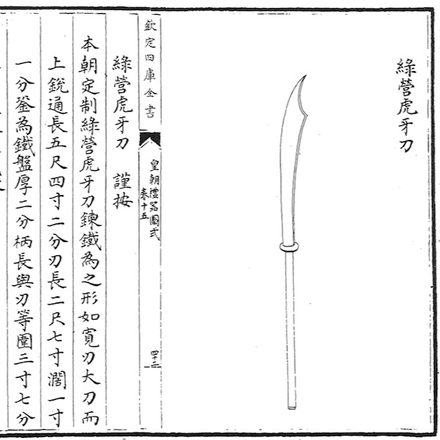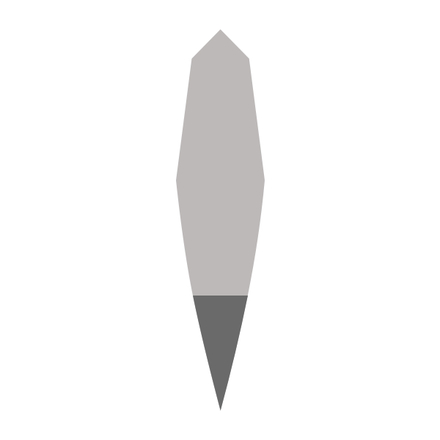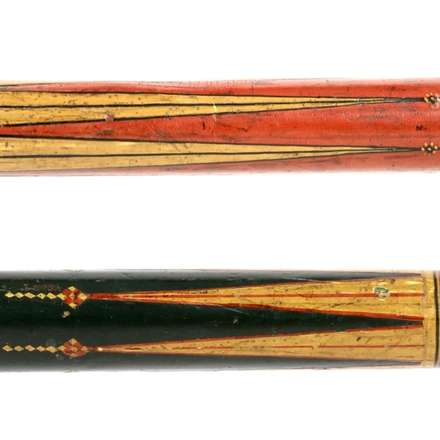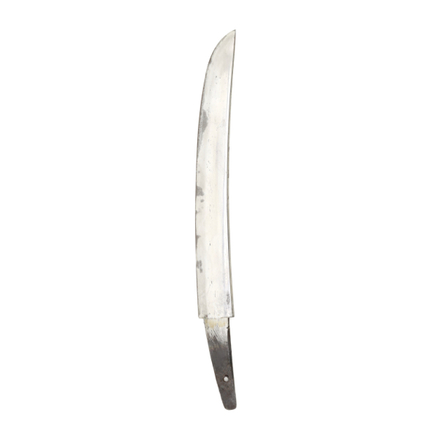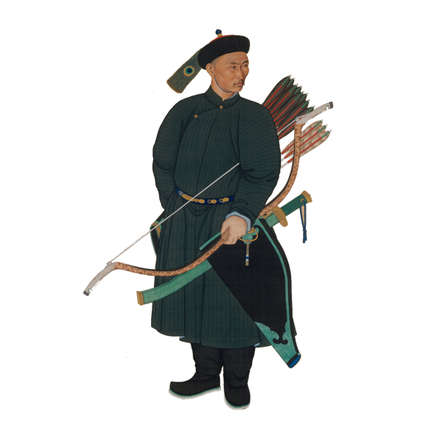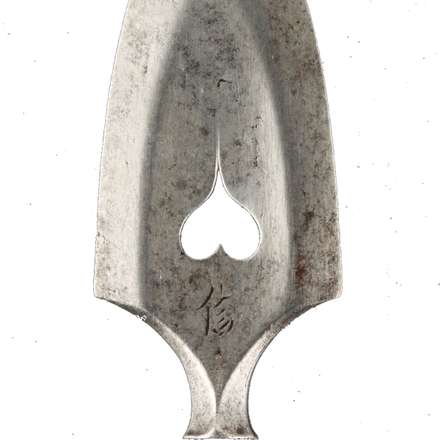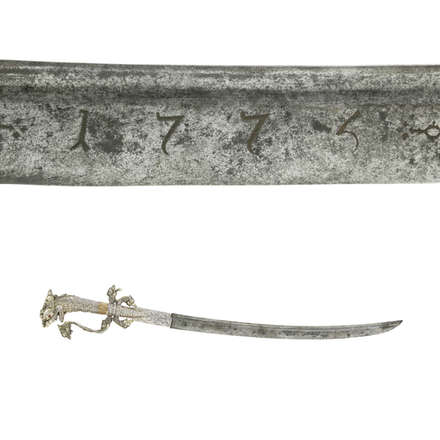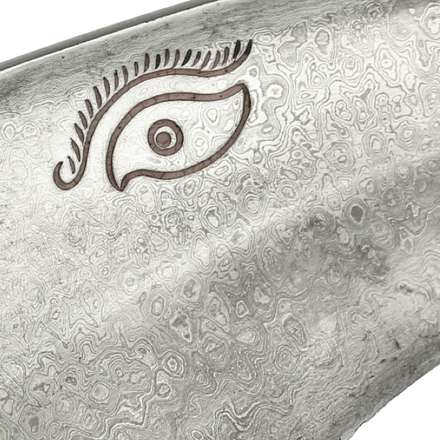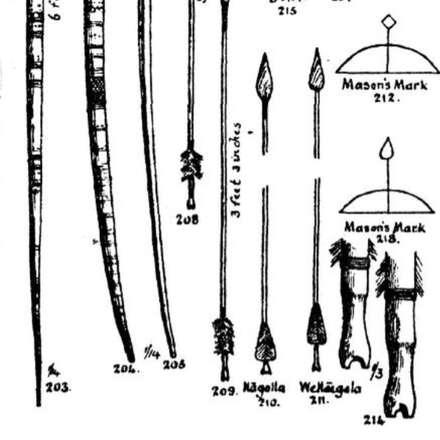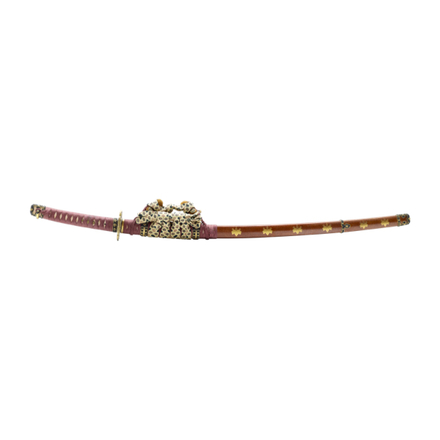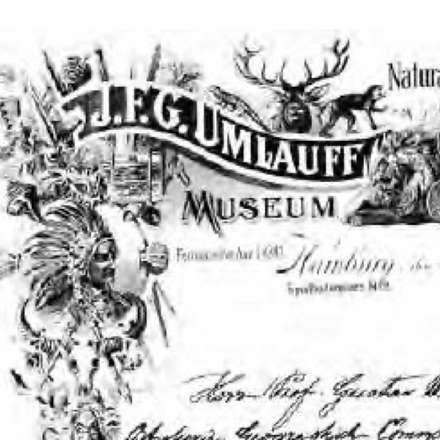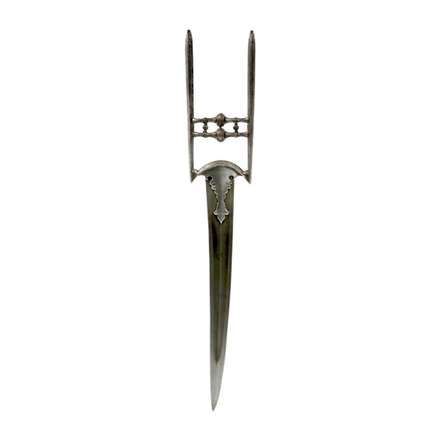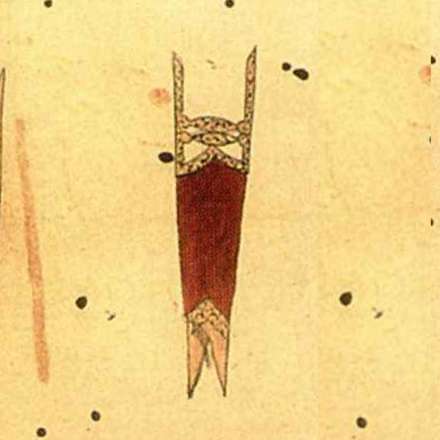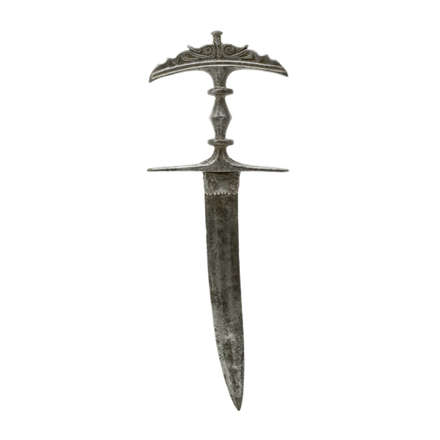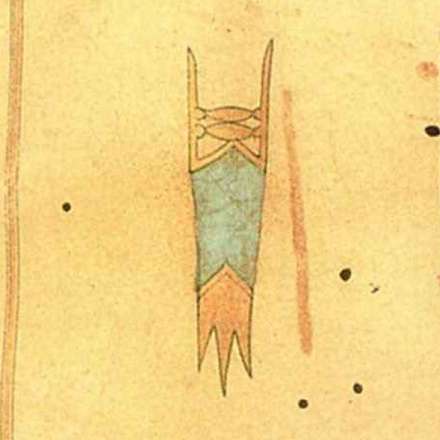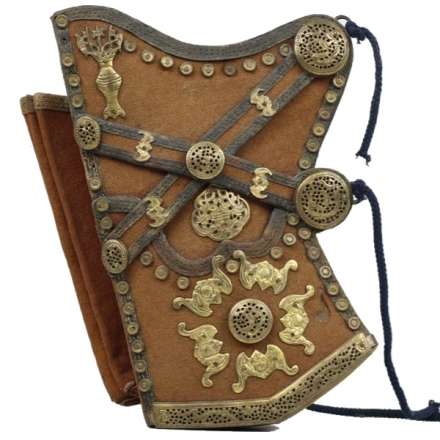A type of Chinese double swords with D-shaped guards.
A very large spear issued to the cavalry contingent of the Guard Division.
Indonesian name for a keris hilt depicting a veiled woman
A traditional fire-making pouch.
A large hunting spear in use by the Qing dynasty Tiger spear division.
An elite unit of Qing imperial guardsmen that accompanied the emperor into dangerous hunting grounds.
A type of dha made by the Chinese Shan in Husa Valley, Yunnan.
Chinese for the handguard of a weapon.
Qing Chinese word for a disc guard.
Mandarin name of a Chinese-edged weapon with a 1:1 hilt-blade ratio.
Japanese term for a sword construction with an edge made of higher carbon steel.
Literally "arrow-makers", a Sinhalese class of craftsmen that did wood turning and lacquer work.
Ibehe is an Ainu word for a knife or sword blade.
The Imperial Bodyguard of the Qing dynasty.
"Boar's eye", a heart-shaped pattern commonly used in Japanese art.
Sinhalese word for "arrow".
Japanese term for a type of tachi koshirae.
Prominent Hamburg-based ethnographic art dealer and museum. Active 1868-1979.
Persian word meaning "demon's tooth", used to describe daggers.
A double-pointed push dagger.
Hindu term for an archaic form of dagger.
A triple-pointed push dagger.
Manchu word for quiver. Also means "right hand".
